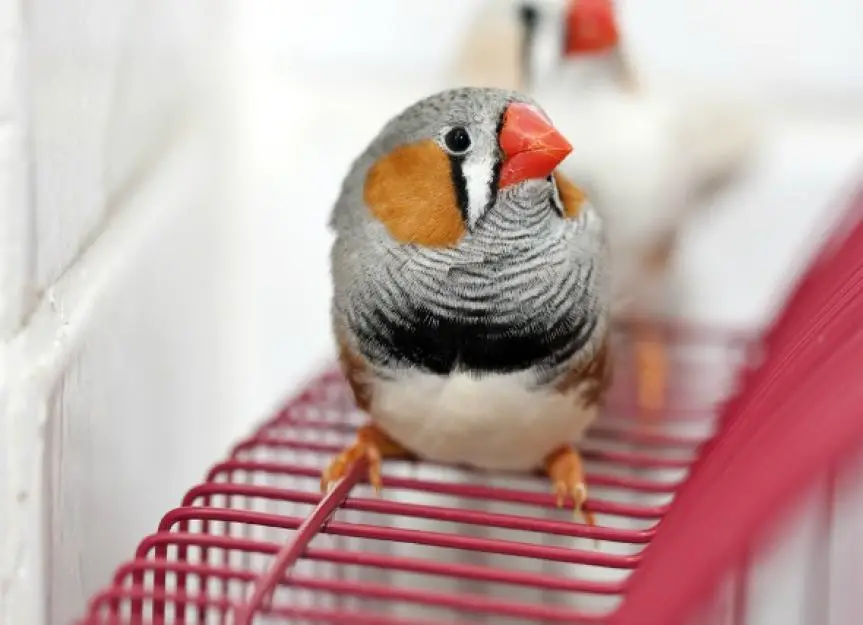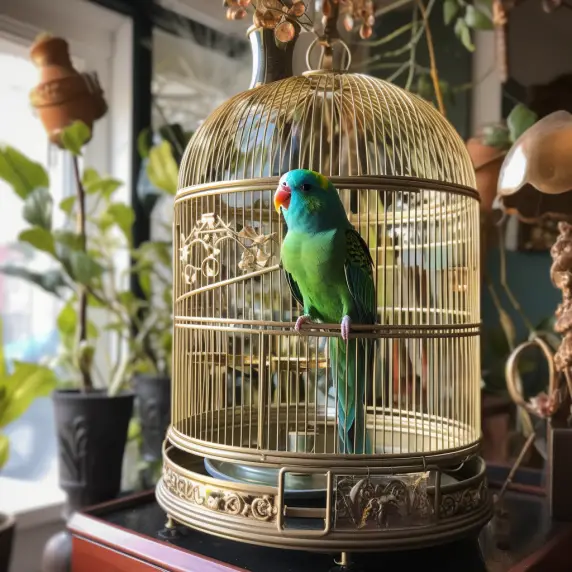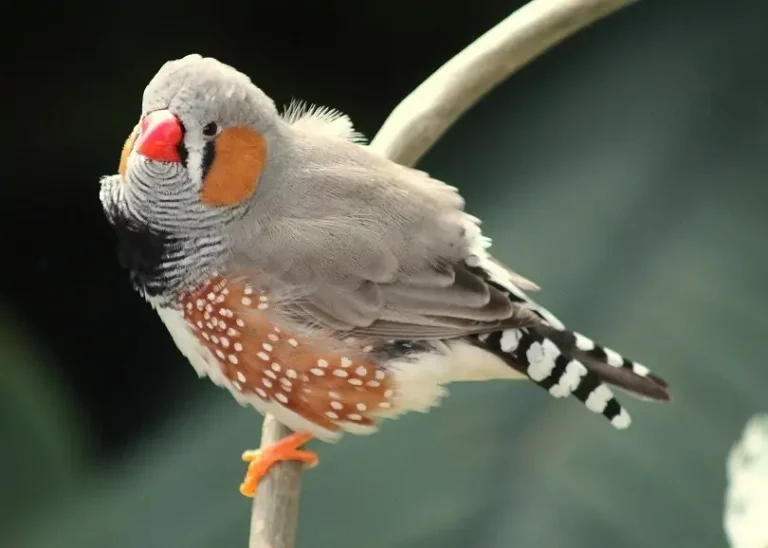All About Finches and Canaries: Traits, Care, and Behavior
Discover the fascinating world of finches and canaries, learn about their unique traits, and uncover the essentials of their care and behavior. This comprehensive guide will help you make an informed decision if you’re considering adopting one of these charming birds as a pet.
Understanding the Finch and Canary Families
Finches: A diverse group of small birds

Finches are a widespread family of small, seed-eating birds known for their colorful plumage and energetic personalities. While there are numerous finch species, we’ll focus on three popular choices for pet owners:
1. Zebra finches
Native to Australia, zebra finches are popular for their striking appearance and playful nature. Males boast a chestnut cheek patch and black and white striped patterns, while females display a more subdued coloration.
2. Gouldian finches
Hailing from the savannahs of northern Australia, Gouldian finches are admired for their vibrant colors and unique markings. These birds come in three head colors (red, black, or orange) and have blue, green, and yellow plumage.
3. Society finches
Also known as Bengalese finches, society finches are a domesticated species with no wild counterpart. They are prized for their friendly disposition and willingness to foster other finch species’ eggs and chicks.
Canaries: Vibrant songbirds with a rich history

Canaries have been cherished as pets for centuries, known for their beautiful melodies and striking appearance. These birds are native to the Canary Islands, Azores, and Madeira, but have been selectively bred to create various domesticated breeds.
1. Wild canaries
In the wild, canaries are small, greenish-yellow birds with a melodic song. They are primarily found in the subtropical regions of the Atlantic Ocean.
2. Domesticated canaries
Through selective breeding, domesticated canaries have been developed for their color, song, and shape. Some popular breeds include the Border, Gloster, and Norwich canaries.
3. Popular breeds and colors
While the classic yellow canary is the most well-known, domesticated canaries come in a variety of colors, including red, white, and green. Breeds such as the Roller and American Singer are cherished for their melodious songs, while others like the Crested canary are admired for their unique appearance.
Appearance and Physical Traits
Finch characteristics
Finches are generally small birds, with most species measuring between 3 and 6 inches in length. Their appearance can vary greatly, depending on the species, but they often have stout bodies and conical-shaped beaks adapted for seed eating.
Size and shape
While finches share some general traits, each species has its unique size, shape, and posture. For example, zebra finches are compact and stocky, while Gouldian finches have a more slender build and long tail feathers.
Coloration and markings
Finch species display a wide range of colors and patterns, often with striking contrasts. Males are typically more brightly colored than females. For example, male zebra finches have distinct black and white stripes, while females are predominantly grey.
Canary characteristics
Canaries are small birds, typically measuring between 4 and 8 inches in length. They have a slender, elegant appearance and are known for their vibrant colors, which are the result of selective breeding.
Size and shape
Domesticated canaries come in various sizes and shapes, often depending on the specific breed. Some breeds, like the Norwich canary, have a robust, round body, while others, such as the Border canary, are more compact and slenderer.
Plumage and color variations
Canaries can have a range of colors, including yellow, orange, red, white, and green. The intensity and shade of their color are influenced by their diet and genetics. Some canaries, like the Lizard canary, have unique feather patterns, while others, such as the frilled canary, have distinctive feather arrangements that give them a frilly appearance.
Behavior and Personality
Finch behavior
Finches are energetic, social birds that enjoy the company of their own kind. They are active during the day and enjoy flying, exploring, and interacting with their environment.
Social nature
Most finch species prefer to live in groups or pairs, as they are highly social animals. They communicate with each other through various vocalizations and body postures. It is essential to provide a large enough enclosure for them to engage in social behaviors without overcrowding.
Communication and song
Finches have a range of vocalizations, including chirps, trills, and songs. Males are usually more vocal than females and will use their song to court potential mates. Each species has its unique song, making it easy to identify them by their vocalizations.
Canary behavior
Canaries are known for their melodic songs and gentle personalities. They are less social than finches, and many canary breeds are content to live alone.
The canary song
Male canaries are admired for their beautiful songs, which they use to establish territory and attract a mate. Each canary has a unique song that is often a combination of learned and innate vocalizations. Some breeds, such as the Roller and American Singer, are specifically bred for their singing abilities.
Male vs. female behavior
Male canaries are more vocal and active than females, often spending their time singing and displaying to assert dominance or court a mate. Female canaries, on the other hand, are generally more reserved and may only vocalize in response to their environment or during breeding season.
Housing and Habitat
Choosing the right cage
Providing a comfortable and safe environment for your finch or canary is essential for their well-being. Selecting the appropriate cage is the first step in creating a suitable habitat.
Cage size and material
The cage size should be large enough to allow your bird to fly and exercise comfortably. Finches need horizontal space for flying, while canaries benefit from vertical space for hopping and climbing. Opt for cages made of non-toxic, sturdy materials that are easy to clean, such as stainless steel or powder-coated metal.
Placement and orientation
Place the cage in a well-lit area away from direct sunlight, drafts, and extreme temperature fluctuations. Avoid positioning the cage near windows, doors, or vents. Your bird will feel more secure if one side of the cage is against a wall.
Creating a comfortable environment
To ensure your bird’s happiness and well-being, it is essential to provide them with a stimulating and comfortable environment.
Perches, toys, and accessories
Offer a variety of perches with different diameters and textures to keep your bird’s feet healthy. Include toys and accessories to encourage exploration, play, and mental stimulation. For finches, add swings, ladders, and nesting materials, while canaries may enjoy mirrors and bells.
Temperature, humidity, and lighting
Maintain a consistent temperature of 65-75°F (18-24°C) and a humidity level between 40-60% to ensure your bird’s comfort. Provide natural or full-spectrum lighting to support their health and well-being. Avoid placing the cage under or too close to artificial light sources, as this may disrupt your bird’s natural sleep cycle.
Nutrition and Feeding
Finch diet
A balanced and varied diet is crucial for maintaining the health and well-being of your finch. In addition to seeds, finches require fresh foods and supplements for optimal nutrition.
Seed mixes
Provide a high-quality finch seed mix as the foundation of your bird’s diet. Look for a mix that includes a variety of seeds, such as millet, canary seed, and Niger seed. Avoid seed mixes with artificial colors or added sweeteners.
Fresh foods and supplements
Offer fresh fruits and vegetables, such as leafy greens, berries, and apples, to provide essential vitamins and minerals. In addition, supply a cuttlebone or mineral block to help your bird meet their calcium needs. Some finch species may also benefit from the occasional protein source, such as hard-boiled eggs or mealworms.
Canary diet
Canaries have slightly different dietary requirements than finches. They thrive on a diet that includes a balanced seed mix, fresh produce, and additional protein sources.
Canary-specific seed blends
Choose a high-quality canary seed mix that includes a variety of seeds, such as canary grass seed, millet, and oats. This should form the basis of your canary’s diet.
Fruits, vegetables, and egg food
Supplement your canary’s diet with fresh fruits and vegetables, such as spinach, broccoli, apples, and oranges. Provide egg food or soaked bread as a source of protein, especially during the breeding season. As with finches, supply a cuttlebone or mineral block to ensure your canary gets sufficient calcium.
Health and Wellness
Common health issues
Like all pets, finches and canaries can experience health issues. Familiarizing yourself with the common problems that can affect these birds will help you recognize potential concerns and seek appropriate care.
Finch health concerns
Some common health issues affecting finches include respiratory infections, scaly face mites, and egg binding. Maintaining a clean environment, providing a balanced diet, and monitoring your bird’s behavior can help prevent many of these problems.
Canary health concerns
Canaries may experience health issues such as air sac mites, feather plucking, and obesity. Regular cage cleaning, proper nutrition, and a stress-free environment can minimize the risk of these issues.
Preventative care and regular checkups
Regular veterinary care is essential for maintaining your bird’s health and catching potential problems early.
Importance of avian veterinarians
Avian veterinarians have specialized knowledge and training in bird care. They can provide guidance on proper nutrition, housing, and preventative care. Schedule annual checkups for your bird to ensure their continued health.
Signs of a healthy bird
A healthy finch or canary will have bright, clear eyes, smooth feathers, and regular droppings. They should be alert, active, and have a good appetite. Monitor your bird for any changes in appearance, behavior, or eating habits, and consult your avian veterinarian if you have concerns.
Bonding and Interaction
Building a relationship with your finch
While finches may not form strong bonds with their human caregivers like some other bird species, they can still become accustomed to your presence and enjoy interacting with you.
Observing from a distance
Finches are sensitive to sudden movements and loud noises, so it’s essential to approach them calmly and patiently. Spend time observing your finches from a distance to allow them to acclimate to your presence.
Hand-feeding and gentle interaction
To build trust with your finches, offer treats such as millet sprays or small pieces of fruit by hand. Over time, your finches may associate your presence with positive experiences, making them more comfortable around you.
Bonding with your canary
Canaries may not be as social as finches, but they can still form a bond with their human caregivers. Patience and consistency are key to building a trusting relationship.
Spending time together
Spend time near your canary’s cage each day, talking softly and offering treats. This will help your canary become familiar with your voice and presence.
Encouraging interaction
As your canary becomes more comfortable, you can introduce your hand into the cage and offer treats. With time, your canary may feel secure enough to perch on your hand or even allow gentle petting.
Remember that finches and canaries have different social needs and temperaments. While both species can provide joy and companionship, it’s essential to understand and respect their individual preferences and boundaries.
Choosing the Right Bird for You
Assessing your lifestyle and preferences
Before deciding on a finch or canary as a pet, evaluate your lifestyle, living situation, and personal preferences to ensure you can provide a suitable home and meet their specific needs.
Time commitment
Consider the amount of time you can dedicate to caring for and interacting with your bird. While both finches and canaries require daily care, finches are more social and may benefit from more interaction and companionship.
Space and noise considerations
Take into account the available space in your home and your tolerance for noise. Both finches and canaries can be vocal, but canaries are known for their melodious songs, which may be more appealing to some people.
Making an informed decision
After evaluating your personal preferences and lifestyle, consider the unique traits and requirements of finches and canaries to make the best choice for your situation.
Finch advantages
If you enjoy watching social, energetic birds and have the space to accommodate a group or pair, finches may be the ideal choice. Their lively antics and striking appearances can provide endless entertainment and fascination.
Canary advantages
If you prefer a bird with a beautiful song and a more independent nature, a canary may be the perfect match. Canaries can thrive as solo pets and fill your home with their melodious tunes.
By considering your own needs, preferences, and the unique traits of each bird species, you can make an informed decision and find the perfect feathered companion to share your life with.
Breeding and Lifespan
Finch breeding
Finches can be bred in captivity, but it’s essential to understand the unique breeding behaviors and requirements of each species before attempting to breed them.
Breeding conditions
To encourage breeding, provide finches with a spacious cage, nesting materials, and a high-quality diet. Some species may require a specific nesting site or additional privacy to feel comfortable breeding.
Mating and nesting
Finches usually form monogamous pairs during the breeding season. The male will court the female through song and displays, and if the female is receptive, they will mate. The female will then lay eggs in the nest, and both parents may share incubation and chick-rearing duties.
Canary breeding
Breeding canaries can be a rewarding experience, but it requires careful planning and attention to ensure the health and well-being of both the parents and offspring.
Breeding preparations
Provide your canaries with a suitable breeding environment, including a large cage or flight, nest boxes, and a high-quality diet with added protein. Separate males and females until you’re ready to introduce them for breeding.
Mating and chick-rearing
Once a compatible pair is formed, the male will court the female with song and displays. After mating, the female will lay eggs and take on the primary responsibility for incubation. Both parents may participate in feeding and caring for the chicks once they hatch.
Lifespan of finches and canaries
With proper care, finches and canaries can live relatively long lives, providing years of companionship and enjoyment.
Finch lifespan
Finches can live anywhere from 5 to 15 years, depending on the species and the quality of care they receive. A well-cared-for finch in a stress-free environment has the best chance of reaching their full lifespan.
Canary lifespan
Canaries typically live between 10 to 15 years, with some individuals living even longer. Providing a balanced diet, clean environment, and regular veterinary care can help ensure your canary lives a long and healthy life.
Conclusion
Finches and canaries are both charming and captivating birds, each with their unique traits, care requirements, and behaviors. By carefully considering their specific needs and preferences, you can create a nurturing and supportive environment for your feathered friends to thrive.
Whether you’re drawn to the lively antics of finches or the melodious songs of canaries, these birds can bring joy, beauty, and companionship to your life.
With proper care, attention, and a commitment to their well-being, you can foster a rewarding relationship with your finch or canary and enjoy the many fascinating aspects of their behavior and personality for years to come.
Resources:






